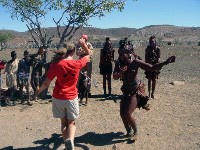On July 14th, people will have the chance to see the regional impact of blues music in photographs. Then, they’ll get to hear the music for themselves.
“Blues in the Park,” a concert series in West Memphis put on by the Crittenden Arts Council, is in its second year. Saturday’s event also includes a special viewing of the Center for Southern Folklore’s archival photo exhibit “Memphis Rhythms” at the Crittenden Arts Council, from 4 to 6 p.m. The blues/gospel concert follows at Worthington Park.
“The concert is a way to honor our blues heritage in West Memphis,” says Janine Earney, executive director of the arts council. “In the ’40s and ’50s, West Memphis was the incubator for electric blues.”
The concert kicks off at 5:30 p.m. and will feature the gospel group Spirit of Memphis, 1983 inductees into the Gospel Hall of Fame. Blues music will take over at 7 p.m. with Blind Mississippi Morris and Brad Webb. Morris has been rated among the top-10 harmonica players worldwide by Bluzharp magazine. Webb has played the blues since age 13 and has been performing with Morris for more than 20 years.
“Blues music brings people together and crosses all barriers,” Earney says. “It’s indigenous to the area and reaches everyone, no matter what race, age, or sex. It’s a wonderful unifying music.”
The culmination of the concert series will take place October 20th with an amateur blues/rhythm competition. But for now, park-goers won’t be competing — just listening and, most likely, moving their bodies.
“Blues in the Park,” Saturday, July 14th, 5:30 p.m., Worthington Park (South Worthington Drive, West Memphis). free.
“Memphis Rhythms,” AT Crittenden Arts Council (1800 N. Missouri Street, West Memphis), 4 to 6 p.m. For more information, call 870-732-6260.
 Patrick Deveau
Patrick Deveau